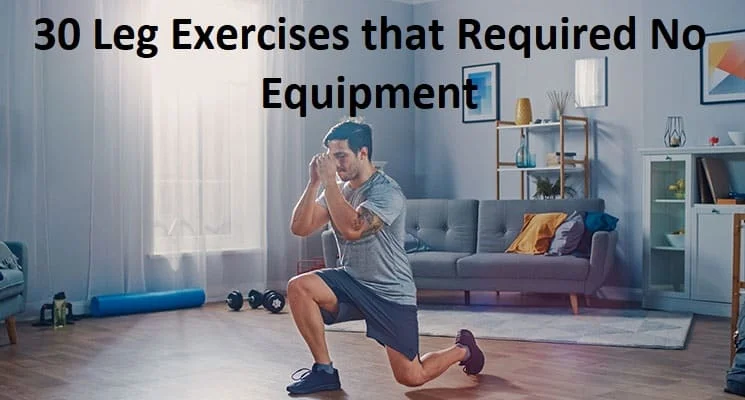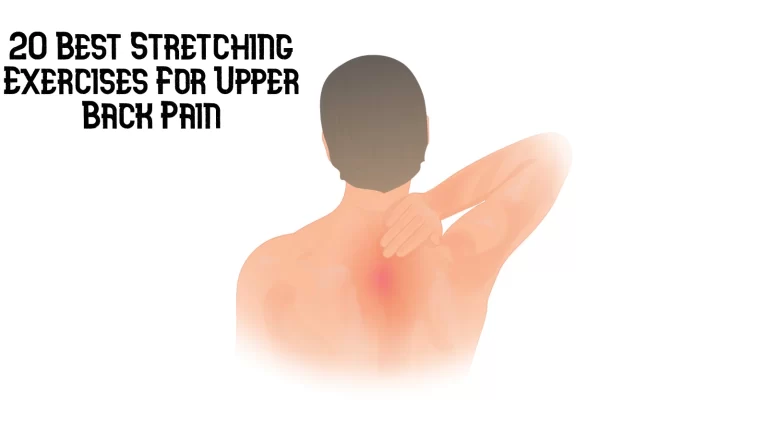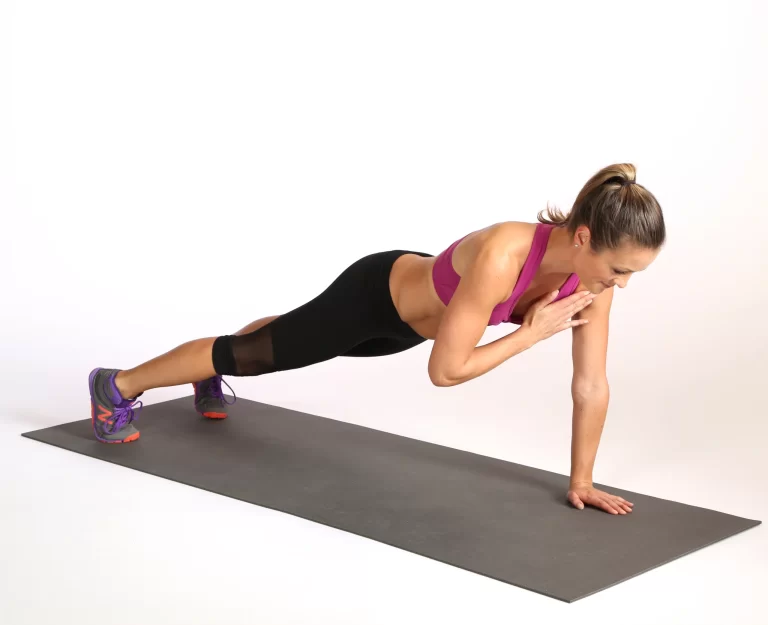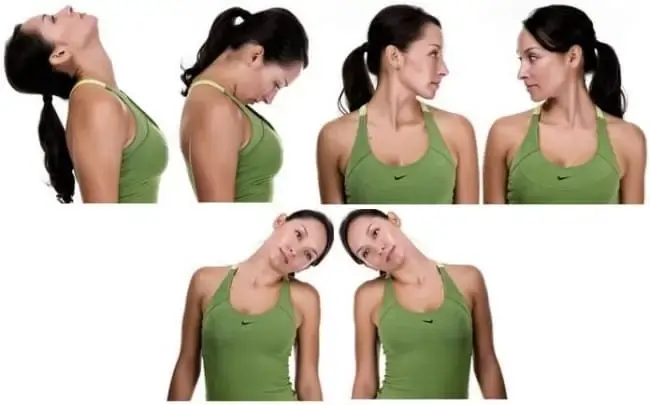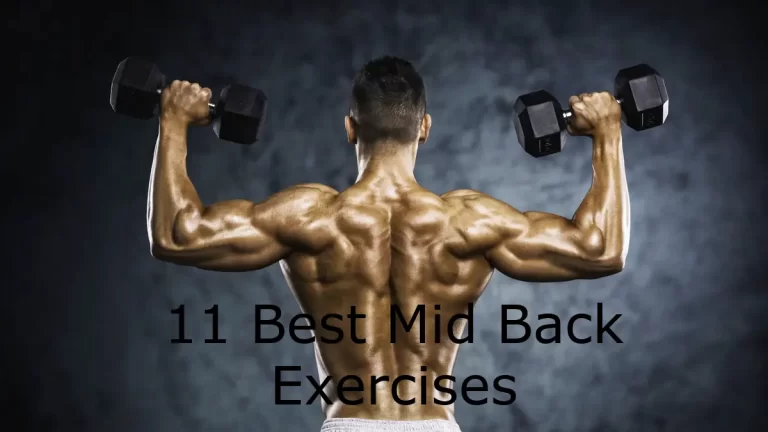30 Leg Exercises that Required No Equipment
Introduction
The person probably imagines lifting heavy objects when they think of leg exercises. That is reasonable. Think of the severe barbell exercises like squats and deadlifts that permit the person to load up as many layers as the person should handle onto the bar. The lower part of the body is the location of the large muscles like the glutes quads and hamstrings, too, all of which permit the person to work with the heaviest loads out of any exercises they should do in the gym.
However, if the person working out at home or outside a fully equipped gym, he/she might not have access to all the equipment and weights necessary for that kind of workout. leg exercises will be the greatest choice at this point.
Leg workouts allow the person to walk freely outside the squat row without carrying difficult weights while continuing to tone the lower body muscles. the person should consider doing that whether he/she has to work without equipment or not, but it’s particularly beneficial for the kind of training the person should have to perform from home.
According to common opinion, these exercises have fewer limitations. There are many workouts that should still challenge the person and provide significant results even though the person might not be capable of improving strength and muscle mass as much as he/she could with weights.
These leg exercises give grants to the person to exercise wherever the person discovers themselves, whether performing squats, lunges, or even quick motions like jumping. Determine a few of the favorite exercises to find out in shape in the living area, lower level, outdoors, or wherever the person wants to work up some calories.
Fundamentally, the legs serve as the structure of the body. Leg strength is necessary for even the most basic daily activities, which involve walking. In order to maintain healthy movement in daily life, it is crucial that the person include leg exercises in their routine.
How to perform home leg exercises?
Shifting the heavy pressure for large amounts is one way to train the legs without using weights. the person can push the lower body to deal with long sets and build muscle endurance by raising the rep counts. Set a stopwatch, use various difficult protocols, and reduce the rest periods to raise the heart rate. The best part is that not having a stool or handle to rest on must encourage the person to stop becoming unfocused during workouts.
Keep in mind that Never perform these workouts daily. that the legs and glutes are the biggest muscles in the body, allowing them a full 24 hours of rest is crucial for their recovery and restoration.
How should someone exercise their legs without using weights or a machine?
One easy way to increase the intensity of leg exercises should be done without equipment Due to the focus primarily on the strength of one leg, single-leg exercises, also known as sole exercises, feel tougher than exercises completed with both legs. Therefore, adding movements like lunges, single-leg glute bridges, and single-leg calf raises should be a reasonably easy way to increase the intensity of home leg workouts.
Simply use one leg to work.
A person should make leg workouts more challenging by moving with force. Pop squats and jump lunges appear to be great exercises that promote leg strength, power, and perhaps a little bit of cardio as well.
When executing leg exercises, it’s necessary to mix squat variations such as squats and lunges with hinge variations like gluteal bridges and their variations. flexion exercises mostly target the backside of the legs, which includes the hamstrings and glute muscles, while squat exercises normally target the front of the legs, which includes the quadriceps. By mixing the front side and back side sorts of moves, an individual might be capable of exercising their legs more effectively and get involved more muscles as a result rather than concentrating on the unilateral side of the leg
Important information: If the goal should be to develop major strength and muscle, leg workouts alone shouldn’t be sufficient. Only when the muscles undergo excessive stress the muscle should actually strengthen and develop. And a heavy workload should frequently be caused by weight gain. weight exercises, regardless, are just advantageous for boosting muscular and strength endurance. An individual should have an ideal route for raising their level of fitness because they shouldn’t have to worry about weights or any other equipment and may entirely focus on a healthiness approach.
How long should the workout continue?
select a specific time period of 20 to 30 minutes for beginners. In 20 to 30 minutes, one person should perform a lot of reps. Naturally, the person should extend the time as they get better and stronger muscles. Regardless of how long the leg workout might go, plan a brief warm-up first. As long as the person selects workouts that boost body temperature, rotate joints, and activate muscles, warming up shouldn’t be tough. The individual should feel motivated to keep up their workouts.
If the person experiences post-workout muscular pain after a leg-day workout, another piece of advice must wait until the soreness disappears before beginning further leg-focused activities.
Generally, one person must wait at least 48 hours before initiating the same muscle group exercise repeatedly. On an active recovery day, stretching the legs must assist the person in feeling looser.
Exercises for the leg should be performed at home without any equipment.
How should a person work out their legs at home?
It’s also an excellent plan of alternating between unilateral exercises like single-leg glute bridges and bilateral exercises such as the squats to generate an intense at-home leg workout, alternate between knee-effective movements like warrior balance, donkey kicks, tuck jump
If someone should work out in a circuit style, with exercises done back to back with no rest, it must be an effective plan to add in some light core exercises and upper-body movements. When the stomach and arm muscles should be connected, the leg muscles should take a break, which would also improve the workout’s efficiency.
There is no magic number for how many legs exercises the person should do at-home protocol but four to seven reps might be a nice place to initiate a newcomer’s leg workout. When it comes to intensity, beginners should start with two sets of 12 to 15 repetitions for each task. If someone finds it enjoyable, they should move on to the next third stage or ultimately four.
Which leg muscle is the hardest to exercise?
It’s possible that each person has a different difficult leg muscle to work. However, the majority of people periodically struggle to work out their smaller muscles. A small but highly important lower body muscle is the gluteus medius.
One of the most important muscles in the lower part of the body for supporting the hips is the glute medius muscle. It is part of a group of muscles named hip abductors, which should be responsible for moving the legs outward to sideways and away from the body’s center. It is located on the outside of the pelvis.
Back and hip pain tends to occur in people with weak glute muscles, which then increases upward. Due to hip pain and back pain, it’s extremely crucial to not neglect the glutes and the glute medius throughout the total Exercises like lateral lunges and curtsy lunges, which include tilting and/or side-to-side movements, must benefit from exercising the glute medius. Utilizing a glute muscle as a finisher that is quick and effective, like not neglecting the gluteus at the beginner level, is an additional choice.
Exercises for the leg should be performed at home without any equipment.
The 30-leg exercises that required no equipment
Forward leg raise
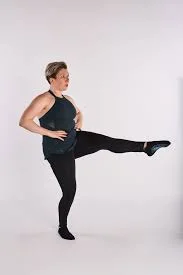
Standing straight up and extending the right leg in front of the upper body, squeeze the quadriceps. If the person’s thigh begins to contract, they should know they are doing it correctly. The leg should then be extended all the way to the hip side before being gradually brought back down.
10 times, twice, or three times daily repetition.
The muscle responsible for forward leg raise: hamstrings such as semitendinosus, semimembranosus, and biceps femoris
Calf raises

Simply stand straight with the feet as wide apart as the hips and go upward onto the tips of the toes before lowering.
repetitions: 5 to 10
2 to 3 sessions per day
muscle include: Gastrocnemius, soleus, peroneus longus, peroneus brevis, peroneus Magnus, and tibialis posterior
Kickback with a straight leg

Standing straight, put the weight on the right leg. Raise the left leg straight backward, making a 45-degree angle with the standing leg as the person contracts his or her gluteus. On this side, perform ten repetitions while lowering the leg gently. By shifting the weight to the left leg and raising the right leg upward and backward, the person may alternate sides when one side rep completed.
two to three times per day.
muscle include : gluteus maximus,gluteus medius,gluteus minimus
Curtsy Lunge with a kick
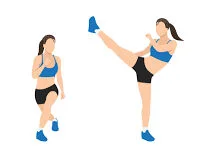
Standing with the feet hip-width apart, the abdominal muscles should be contracted. the initial point at this stage
Bend both knees and take a cross step with the right foot behind the left leg to lower the self into a curtsy lunge.
Use the heel of the left foot to push the self upward to standing. After that, extend the right leg to the left side and try to kick a little while gently balancing for a little period of time with the right foot.
Put the right foot downward and position it after the left leg as they will immediately begin the next repetition.
Once someone has completed all the reps on one side, change to the opposite side.
2 to 3 sessions per day
the muscle include: primary muscles: Quads, glutes, shoulders, core
accessory muscles: Upper back muscles like trapezius, latissimus dorsi, rhomboid, levator scapulae, chest muscles like pectorals, arms, hips, thighs
Side-lying inside thigh elevation
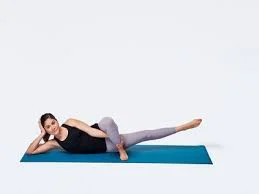
Legs should be straight and extended in front of the wall while on the mat or with the body supported by the forearm.
When someone crosses their upper leg over their lower leg by bending at the knee, the upper foot should be in front of the lower knee. the initial point at this stage.
Gently and repeatedly raise the lower leg toward the ceiling. Throughout, keep your body upright. Return to the initiate position. It’s one rep, then.
make 10 to 15 repetitions.
two to three times per day.
muscle include: inner thigh muscles such as adductor longus, adductor brevis, adductor magnus, pectineus, gracilis
Gluteal Bridge
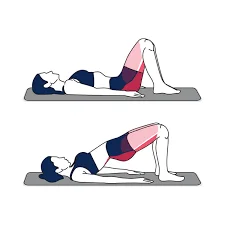
Legs bent, feet hip-width apart, and face toward the ceiling while lying down.
so the core is strengthened when the lower back presses on the floor. the initial point at this stage.
Squeezing the glutes at the top will lift the hips while keeping the tight position. Hold for just a second, then lower the hips to the floor to return to the starting position. It’s one rep, then. make 10 to 15 repetitions.
two to three times per day.
muscle include: gluteus Maximus
In, out, center calf raises
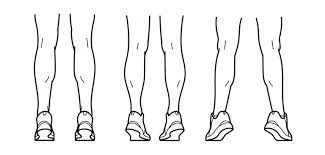
With calf raises the person should more effectively target the two heads of the gastrocnemius muscle as well as different fibers of the deeper soleus muscle by changing the foot position.
This version will help the person utilize all of the muscle fibers in the calf muscle group without weight, making it a great alternative for performing simple calf rises with the toes forward.
When executing the in and out modifications of the calf, angle the foot about thirty degrees to the inside or outside for each of the two changes.
When executing the in and out variations of the calf, angle the foot about thirty degrees to the inward or outward for every one of the two changes.
There is no need for any special equipment for this leg exercise, and newcomers should utilize both legs at once. Perform single-leg calf lifts in each of the three positions in the following step.
The steps for performing this leg workout just utilizing body weight must be as follows:
- When the person places the feet, the heels should hang off the outer surface of the platform or floor. If the person should have the strength, they should support himself/herself with one leg while standing on the other leg.
- The person should perform calf rises by pressing into the ball of the foot and rising up onto the tips of the toes.
- While resting, maintain the upward ankle position for two to three seconds.
- Reduce the route slowly until the heel takes position well below the level of the stairs and the calf muscles must be appropriately stretched. For greater success, a person should go through a wider range of motion, spend longer time under stress, and use more muscle fiber, calf mass, and strength for satisfactory gaining
- Toes pointing forward should be used for at least 20 to 25 repetitions.
- Then perform the exercise again while pointing your toes inward. such that the individual is in a pigeon-toed position.
- After that deviation, perform the same exercise while standing with the feet together and the toes pointed outward.
The muscle included: gastrocnemius, soleus
The one-legged stair jump
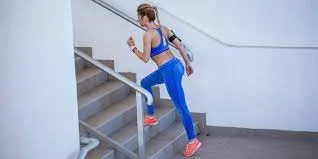
As long as the home has stairs or steps, one of the finest exercises to include in a leg workout without equipment is the single-leg stair jump.
The strength and power of each leg will be developed through the use of plyometric exercises.
Since it should be a one-sided exercise, the movement pattern accurately reflects the musculoskeletal demands of running or jumping in sports utilization.
Additionally, performing one-side exercises should typically be a better way to strengthen the leg muscles when exercising the legs without weights because the entire body weight must be supported by just one leg, which should provide the person with the amount of overload required for stimulating muscle hypertrophy and increasing strength.
The following procedures must be followed in order to perform the lower leg workout without any equipment:
- Standing one foot back from a stair or set of steps, stand straight and in good posture
- Standing with just the right leg, bending the left knee, and elevating the left foot behind the body.
- He or she should immediately put their arms behind themselves while keeping a strong core as they lift up their body upward and land on the step of the sole of their foot. step off on the sole of the foot.to connect the gluteus and calf muscles
- Bend the knee to strengthen the quadriceps while the person takes the previous step upwards, then press through the foot to stand up straight. Return safely to the starting point by jumping down. Execute each repetition on one leg, and then switch legs.
muscle included: calves and glutes, hip flexors, and also include hamstrings and quadriceps.
Side-lying leg lift
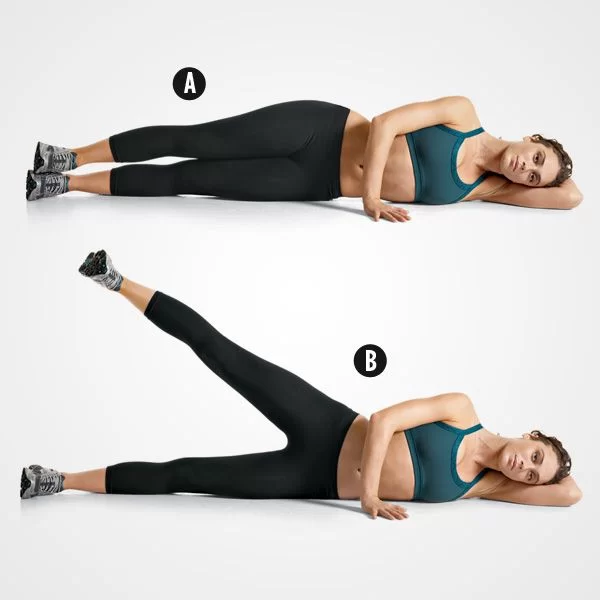
One leg should be placed on top of the other leg while lying on one side with the legs straight out in front of the ceiling. Set the body flat on the mat or stabilize it with the forearm. the lower leg bent in a downward motion. The side-lying leg lift starts in this posture.
Lift the top leg firmly and gently in the direction of the ceiling. Never lift from the lower back; always do so from the hip and the gluteal area.
Return to the starting location. It’s one rep, then. Do 10 to 15 repetitions.
Change to the other side once you’ve completed all the repetitions.
three times per day.
muscle included: outer thigh muscles such as gluteus medius, gluteus minimus, hip abductor, tenor fascia latae, piriformis, sartorius, superior fibers of gluteus Maximus
One-legged Gluteal Bridge
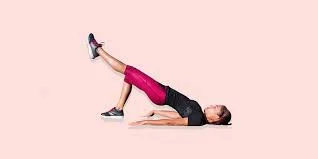
Knees bent, feet flat on the ground, hands at sides of the body, lying face up with the leg lifted off the floor. By engaging the abdominals, place the lower back against the floor.
Stretch the left leg from this position by raising the left foot off the floor. The single-leg gluteal bridge should be positioned here in its initial position.
Push off the right foot, tighten the abs, and squeeze the glutes while lifting the hips and performing a glute bridge.
Gradually lower the pelvis back to the ground. One rep counts.
execute every repetition should be done to one side. ten rounds
three times per day.
muscle included: hamstrings, hip flexors, lower back muscles, and gluteal muscles such as gluteus Maximus, gluteus medius, gluteus minimus
Gluteal bridge march
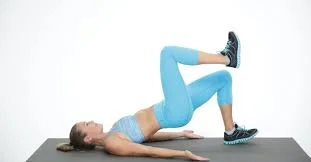
Face upwards, resting with knees bent and feet hip-width apart. Therefore, the muscles in the core should be activated as the lower back presses against the floor.
Squeeze the glutes muscle at the highest point while keeping the body in this contracted position. hold the gluteal bridge march position. This is the starting position.
The right knee should now be raised up toward the chest as an individual lifts the right foot off the floor. stopped the marching gluteal bridge motion when the hip is at a 90-degree angle with the ground.
In order to perform the opposite gluteal bridge march on the other side, place the foot back down, and then raise the left foot off the floor. One rep counts. Do 10 to 15 repetitions.
While maintaining an elevated hip position, move forward while alternating foot placement.
three times per day.
muscle included: major muscle gluteus
minor degree muscles such as hamstring, hips flexor, core, quads
Gluteal bridge with a squeeze
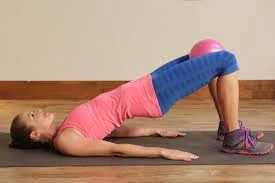
Resting on the back with both legs bent, move the fingertips almost touching the heels. The gluteal region, lower back, and mid back should be progressively lifted off the ground while pushing the belly button in toward the spine. ensure that the feet should be as broad as the hips. She or he should squeeze the gluteal bridge while maintaining the squeezing position, then release and lower themselves back down.
perform 10 reps
session 1 to 2 times a day
muscle included: gluteus Maximus
Single-leg deadlift
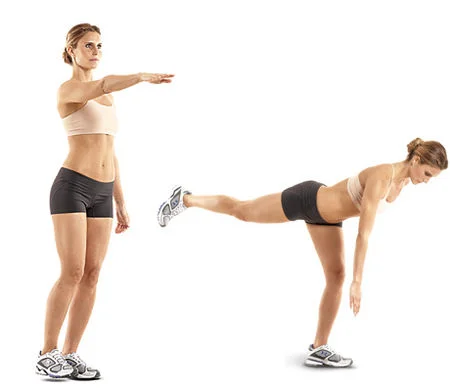
Place both of the feet hip-width apart as an individual stand. Put the weight on the left leg and use the right toe as a kickstand for balance. Keep the left knee flexible as the person starts to bend at the waist progressively. Set the hands on the thighs for balance. Continue to bend forward as the right leg raises slowly upward and backward until the body appears to be in a straight line from head to toe. Ensure that the hips stay parallel to the ground. Beginning the technique where the person left off after slowing down the movement
reps: 5 to 10
sessions twice daily.
muscle included: gluteus Maximus, gluteus medius, ankle muscles, core muscle
Single-leg calf raises
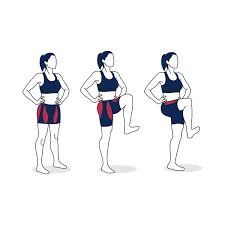
He or she should stand with the lower extremities hip-width apart.
Lift the left knee to hip level while keeping the toes pointed and the hands wherever they are most stable—on his/her hips or behind his/her head. This is the initial position of the single-leg calf raise.
A high one should be able to lift the right leg’s heel off the floor while the person should be capable of holding the balance on the left foot
Hold for three to five seconds, then bring the soles of the feet to the floor to complete one repetition, then perform ten repetitions before switching sides.
twice a day
muscle included: calves, tibialis anterior
Inverted inner thighs opened

Rest on the floor on the back with your knees flexed and your feet flat on the ground. Pull the right leg upside, extending it upward, keeping the thighs in contact with each other. This is where the beginning begins.
Continue to keep the lower back and hips solidly positioned on the floor while slowly extending the right leg out to the right side for the appropriate amount of time.
Bring the leg backward to start. It’s one rep, then. Continue doing 10 repetitions.
Once that person has finished all the reps, repeat on the opposing side.
muscle included: inner thigh, outer thigh, abdominals
Donkey Kick
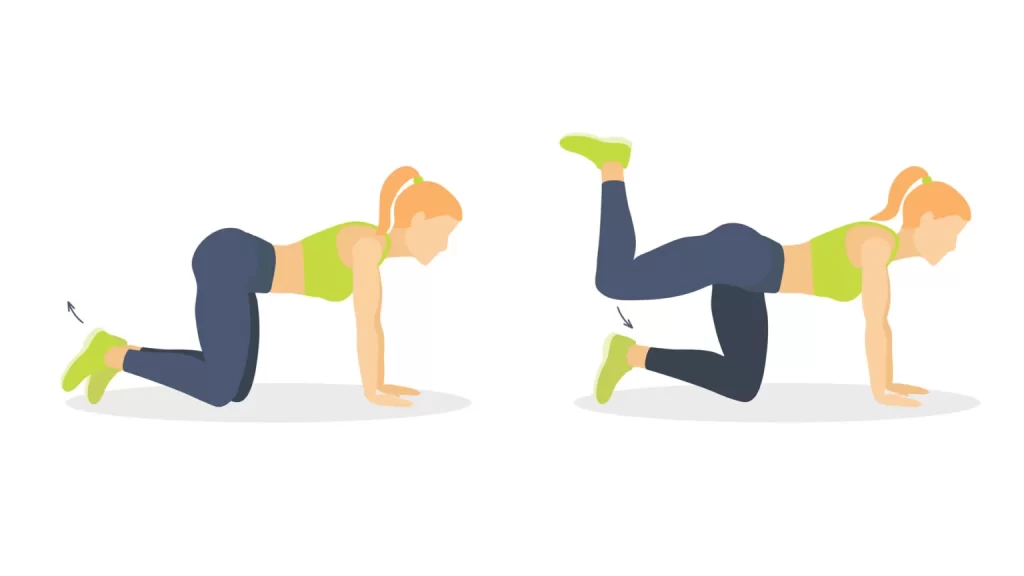
Starting on all fours, create tension on the abs, and place the wrists and knees beneath the shoulders.
Lift the right foot up and toward the ceiling by lifting it upward using the glutes and hamstrings.
To prevent the person from dropping to the left side during rising, stop before extending the person’s longitudinal arches to the lower back and preserve abdominal stability. Keep in mind that donkey kicks must be more used for strength than a flexibility exercise.
Lower the leg to the starting position to complete one rep.
After finishing every rep on one side, switch to the other.
twice a day
muscle included: gluteus medius, gluteus minimus
The wall squat
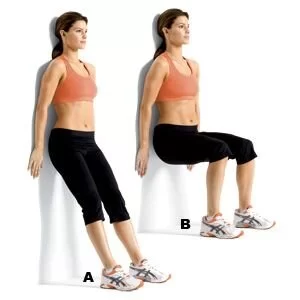
When lying against a wall, maintain a straight back and hip-width distance between the feet. Maintain the arms by either side or on the hips as the person moves down the wall while bending at the knees. When bending, the thighs should be perpendicular to the floor. The person might have to shift the feet away from the wall in order to make a 90-degree angle at the knee joint at the end range of the squat. Before moving upwards on the wall to the position where the person initially applied pressure with the heels, contract the glutes and abdominals.
the muscle included: gluteus, semitendinosus, semimembranosus, biceps femoris,vastus lateralis,vastus intermedialis,vastus medialis, rectus femoris
Squat with wide, open-toed legs.
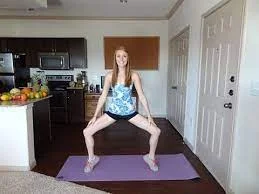
As a person stands, the feet should be wider than the hips. Spread the toes. Holding the hands on the hips, grip the belly button toward the spine. Tilt the pelvis forward as he or she squats down and extends the knees to the sides. Maintain a flat back and a downward-facing tailbone. Put strong pressure on the heels as they stand up again. Twist the glutes at the top.
reps:10
twice a day
muscle included : gluteus medius,gluteus minimus,gluteus Maximus,inner thigh muscle such as gracilis, obturator externus, adductor brevis, adductor longus and adductor magnus
Lunge in reverse to single-legged hop
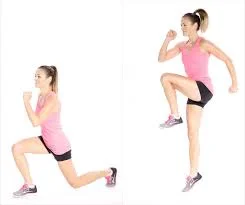
Standing with the feet shoulder-width apart, tighten the core. The starting position is this.
Take one step backward with the right foot, landing on the right foot’s sole while keeping the right heel off the ground.
Bend both knees to 90 degrees as the person lowers into a lunge. Bending the elbows, raise the right hand forward and the left arm backward a little bit. he/she shouldn’t attempt to extend his/her gluteal region out. Rather, keep the hips flexed and the abdominal muscles engaged.
Jump as high as possible while giving a thrust with the left foot and dragging the right knee toward the chest.
Reposition yourself to take another lunge as the person should gently descend to the ground on the left foot in the typical position. Executing 10 reps. It is one rep.
Finish all the repetitions on one side. then change the sides and repeat the Reverse lunge to single leg hop
muscle included: quadriceps femoris, gluteus, hamstring
Oblique crunch to squat
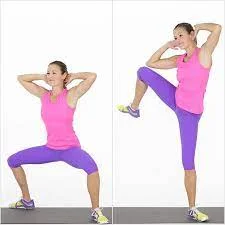
He or she should stand with their feet slightly wider than shoulder-width apart and their hands touching in front of their chest. The starting position is this.
The individual lowers into a squat position by pulling their hips back and bending their knees while they shift their weight into their heels and keep their back flat and chest up.
When rising to the feet, tilt the left knee toward the chest by moving forward. When bending toward the left knee and turning the body to the left side, the right elbow should touch the left knee. Move the hands to the starting position as the person lowers the knee.
Squat down once again and repeat the oblique twist on the other side.
It’s one rep
execute 10 reps
twice a day
The muscle included: obliques and rectus abdominis
Bounce Squat
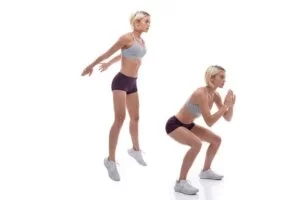
As the person stands, the feet should be roughly hip-width apart. this is the initial position of the bounce squat.
Tilt the hips forward as the person squats backward. Knees should be bent when the thighs remain perpendicular to the ground.
As the person jumps as high into the air as they should be able to, they should straighten their legs. To generate speed, keep the back straight and the chest up while swinging the arms by the sides of the body.
Kneel down on the ground with a relaxed posture. It’s one rep, then. Step carefully into the subsequent squat.
2 to 3 times each session
The muscle included: the gluteus, quadriceps femoris such as vastus medialis,vastus intermedialis,vastus lateralis, rectus femoris, hamstrings such as semitendinosus, semimembranosus, biceps femoris, hips
Squat to sidestep
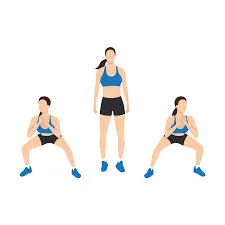
Stand with the soles of the feet together, the core muscles firm, and the hands at chest level.
Move the right foot to the side, separating the feet such that they are wider than hip-width apart. Once the gluteal region is pushed back, flex at the hips to lower into a broad squat, bending both knees.
Straightening the knees, return the right foot to its starting position. It’s been one round. Complete 10 rounds.
Switch to the other side after doing all of the repetitions.
twice a day
muscle included: gluteus medius, quadriceps, inner thigh muscle such as adductor longus, adductor brevis, adductor magnus, pectineus,gracilis
Squat walk to jump
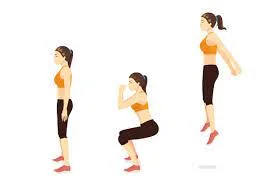
With the feet hip-width apart and the abdominal muscles involved, stand straight.
Squat down into a half squat by pushing the hips backward and bending the knees.
Move the right foot to the right side while in the squatting position, permitting the left foot to follow the pattern. Use the right foot to take two more steps to the right.
when the individual jumps extending their legs fully and rising firmly. Extend the arms behind the body to exert more effort.
The individual should be made to touch the ground before immediately sitting down once more. repeat on the opposite side. it’s one rep. Execute 10 times throughout.
Keep going in different ways.
twice a day
The muscles included: the gluteus, quads, hamstrings, hips
Changing from a forward to a reverse lunge
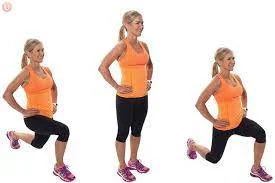
The first time a person stands, the feet should be shoulder-width apart. Maintain the hands near the heart. The starting position is this.
Lift the right foot, move forward roughly two miles, then firmly place the foot on the ground. As the person bends both knees, the left tibia and right quadriceps should be near the floor. The body should curve slightly forward to maintain a flat back that should not be twisted or oval in shape. The right knee should be beyond the right foot, and the pelvis and core should be connected.
Apply pressure to get back to the beginning position, then With the right foot, take a step backward while keeping the heel off the ground. Then, reposition yourself about two feet on the sole of the foot. As the person bends both knees, the left quad and right tibia should be nearly equal to the floor. The body should bend forward progressively so that the back should be flat and not twisted or rounded. The left knee should be over the left foot, and the pelvis and abs should be aligned.
Push using the left foot’s heel to return to the starting position. it’s one rep. Do 10 repetitions.
Switch to the opposite leg after completing all the reps on the first one.
twice a day
muscle included: quadriceps femoris, hamstring, gluteus, calf
Gun Squats
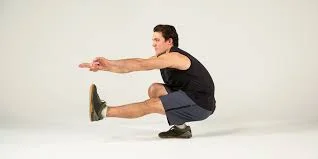
The most challenging leg workout exercises one should perform without any equipment should be pistol squats because of the movement’s extreme strength and control demands for the quads, glutes, hips, ankles, and core.
As the person should straight away, place the feet together. This is where the beginning begins.
The left leg should be extended and raised a few inches with the foot flexed.
Bend the right knee, raise the left leg to hip height, and squat backward while leaning forward at the hips. Lengthen the arms outward for balance.
If somebody tries to bend their knee to a 90-degree angle, it will collapse. If an individual is not a beginner category, he/she shouldn’t give up because these tasks must be very difficult.
As the person returns to the beginning position, squeeze via the heel of the right leg to straighten the right leg. Continue with the remaining reps.
session: based on the individual’s capacity
Jump Lunge
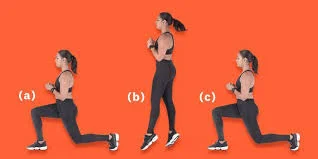
As the person stands, space their feet about shoulder-width apart. This is where the beginning begins.
While maintaining a stable abdominals, jump with the left foot forward and the right foot backward. Next, lower theself into a lunge while flexing both knees.
Jump with both feet to the starting position.
Lunge to the opposing side after pushing the right foot forward and the left foot backward. It’s one rep, then. Do 10 repetitions.
Continue jumping while alternating sides each time the person bends.
To make the jumping lunge method more challenging, one should alternate the feet in the middle of the action and immediately lower theself into a lunge each time. This alteration should inhibit the person from jumping their feet back together.
muscle included: hamstring, calves, gluteus, hip flexor
Frog jump
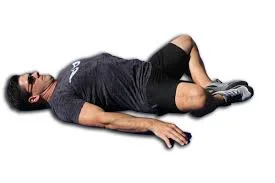
Start lying down with faceup on the ground or a mat with the knees bent and the feet hip-width apart.
When the person presses his or her heels together, the legs should come together in a diamond structure. The starting point is here. Set up the heels as close to the pelvis as possible to begin the proper posture; however, if one wishes to feel a stretch in the glutes, one may need to shift the pelvis further away.
By tightening the glutes, the person should lift the pelvis off the ground and then walk straight to the knees. A one- to two-second break should be made at the highest point.
Lower the hips to get back into the starting position. One rep counts. complete 5–10 repetitions.
session: depends on individual capacity
muscle included: gluteus, hip flexor, quads
A-skip
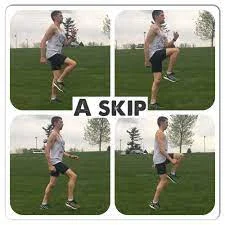
A common field and track workout that prepares the legs for greater exertion is the A-skip. A-skips should be an excellent way for non-track athletes to warm up and prepare their bodies for leg exercises.
How to execute an A-skip:
As the person is straight up, spread their feet to hip width.
Holding a flexed foot on the lifted leg, strongly raise one knee.
Lifting the knee while pushing through the ground with the positioned foot, pull the heel off the floor.
Once the top of the thigh is parallel with the ground, proceed by pushing that foot strongly heel first, to the floor. Stand up straight on the toes and contact the ground when the heel touches the ground and extend the heel off the floor
Permit the arms to swing naturally by adding the other side arm swinging upward with the other side knee as soon as the person reaches the floor with their positioned foot. This will make the following skip.
muscle included: primarily targets the quads and to a lesser degree also targets the glutes, hamstrings, hip flexors, lower back, and outer thighs.
Split squat
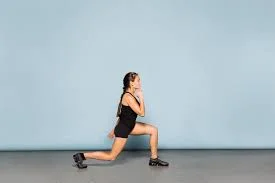
Step forward with the right foot, keeping the right heel set in place, as though lunging forward. Put the bottoms of the feet beneath the shoulders. The starting position is this.
Bend both knees to form a 90-degree angle with the legs. The center of the chest should be upright, and the whole body should be moving forward gently in order to maintain a straight back that is neither twisted nor curled forward. The right quadriceps should be parallel to the floor and the right knee should extend beyond the right foot. The body’s abdominal muscles and the gluteal region should be engaged.
Push with the right foot to reset to the starting position. It’s one rep. Execute 10 reps on each side
After finishing all the repetitions change the sides
session twice a day
muscle included: quadriceps femoris such as vastus medialis,vastus lateralis, vastus intermedialis, biceps femoris, gluteus
Tuck jump
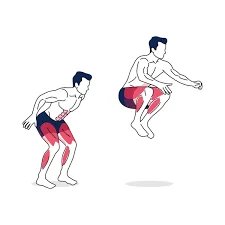
As somebody stands, their feet should be about hip-width apart. To maintain straight forearms, bend the elbows while maintaining the arms close to the body and by the sides. The starting position is this.
Knees should be flexed, the gluteal region should be pushed back into a squat, and weight should be moved back. Verify that the hips should not fall down beneath the knees.
To advance, one must put up their best effort. With the aid of firm abs and legs directed in the direction of the forearms and jump. Prevent from bending forward and keep the back straight.
While landing with the feet hip-width apart, the knees should be flexible. Execute 10 repetitions It’s 1 rep. Instantly come back to the squat, then continue.
sessions: twice daily
The muscles included: the gluteus, hamstring such as semitendinosus, semi-membranous, rectus femoris, calf, obliques, lower back, hip flexor, quadriceps femoris
Benefits of Weightless Leg Workouts
- suitable for learners
- Progress in a variety of directions
- Exercise anyplace
Leg exercises are an excellent place to start for beginners When the person is free of dumbbells and other fixed loads, the person should discover the leg workout easier to move in multiple directions of motion, which is crucial for a more well-rounded workout, improving the physical ability, and simulating the actions the person carry out in real life outside of the fitness schedule. By being able to jump and squat without the weights pushing the person downward, the person should be capable to accelerate the speed of the workouts and raise the level of exercise difficulty.
Safety and health measures
When training on the legs, balance must be important. The person generally should not want her/his knees to extend too far over her/his toes when performing any squat or lunge movement. To stop putting further strain on the knee, neglect doing far-extended motions. The doctor would prefer that this squat or lunge happen as rarely as possible, while it is acceptable if it happens by accident.
Conclusion
Leg exercises that only involve the own body weight are a great way to improve functional fitness and develop key movement patterns.
The squat and lunge motions should be the primary workouts available for serious bodyweight leg training.
More exercises must be included in the lower leg program to increase variation, warm up, and boost performance and mobility
Leg exercises should be changed to focus on different fitness goals, such as strength or conditioning.
The need for external power might become necessary to continue strengthening.
leg exercises should always be used to gain cardiovascular conditioning.
The finest thing is that the person must do these exercises anywhere, at any time. The next time the person needs to get the blood flowing after spending too much time sitting down, try any of these exercises.
FAQs
How many leg workouts must be required?
Pick 3-5 exercises for each leg workout as a beginning trying to improve overall fitness while maintaining the idea of keeping things straightforward. After that, perform each exercise for 3 sets of 8–12 repetitions, being sure that the person should utilize the muscles but not to the point of failure.
should individuals perform a leg day without any instruments?
an individual should able to execute still squat, lunge, and hinge without weights, which is a great first step for beginners. However, when the person is free of dumbbells and other fixed loads, he/she should find it easier to work in various planes of movement, which is important for a more well-rounded workout, improving athleticism, and simulating the actions he/she should carry out in real life outside of the training program.
should weightless leg exercises be effective?
It’s not just acceptable; it might even be preferable. This is due to the lower risk of damage with leg exercises. When done enough times, it must be equally effective as weight training at promoting muscle hypertrophy, which should be the process via which muscles grow.
should legs be worked out without equipment?
Pop squats and jump lunges are effective exercises for training the legs, improving the power, and possibly adding a little bit of cardio as well. It’s crucial to combine squat variations like squats and lunges with hinge alterations like donkey kicks and glute bridges while performing leg exercises.
should an individual perform the leg workout without shoes?
leg exercise that required no equipment advised to strengthen the legs. the person may best exercise the foot muscles by performing so without shoes. In other words, the person practices firmly grounding the legs and feet to increase balance and control.
Is it required to work legs?
Leg exercises and routines should be essential components of a well-rounded, total-body fitness program that increases strength, speed, and stability. Since total health depends on the strength of the legs, it’s critical to maintain consistency when exercising legs.
Who requires a leg day?
Giving the legs some special attention is important if the person chooses whole-body cardiovascular exercises or upper-body strength training. the person will focus all of the efforts on improving muscle strength, endurance, and flexibility in the legs, hips, and lower back during leg day.
Is a leg workout possible without doing cardio?
Even if cardio is essential for a healthy lifestyle, the person should not required to perform cardio on leg days, especially if the person is a strong mover during workouts. To prevent injuries from overstretching, the person might need to space the leg workout and cardio day out over a few days.
Why should leg exercises be difficult?
Because of their size legs hurt to exercise.
The legs of a person should burn a lot of energy quickly since they must be bigger and stronger than other body parts. In a state of emergency, our bodies will use up energy more quickly than oxygen must be given, a process known as “anaerobic” metabolism.
should leg exercises build up the upper body?
When challenging exercises are combined with the leg press, there is an obvious buildup of muscle and an improvement in performance in the upper body. Leg muscle development boosts upper body performance as well.
should newcomers be required to work on their legs?
The greatest muscle group in the body is found in the legs.
If the person should not exercise on the legs, he/she should be neglecting a significant portion of the body that participates in practically all actions. Leg muscles must utilized in a variety of activities, such as walking, sitting, standing, running, crouching, jumping, and more.

